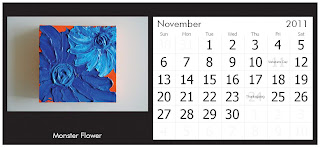In those moments when the loudest sound is the fizzling 7up in my cup, the creative thoughts and ideas come like never before. We really can't think of anything new if we are always filling our mind with what already is, or with someone else's words and thoughts. To start anything creatively, a pause is welcomed and absolutely necessary.
I am constantly being asked why I created a certain peace of art.... how do I get ideas....
I think that everyone can create and have ideas if they stop thinking about them... the art for me is more a matter of happening than thinking. The best creations are not intellectual but rather intuitive. The intuition is something that at least in my case was not nurtured very much until my adulthood.
The creative energy works the best when allowed to reign in its own unexplored direction of happenings... Once in this zone, I start loosing time. If I loose time, I am certain that I'll create something of value. It is an interesting experience that only happens in certain occasions. Little children loose time while playing, and many creative people loose time when immersed into their activity. What I mean by loosing time is that you have no idea how much time has passed since you started something. The energy draws you to finish no matter what.
I remember once I was helping with my children's school project. Even after everyone fell asleep, I continued on the project until finished. Once I finished, I was very surprised to find out that it was 5:30 AM. It felt like a blink of an eye and I was not tired one bit. It was a three-dimensional art project that involved building a model house.
For me, making art is like that three-dimensional project. I make art when I receive a surge of creative energy and it mostly happens out of a creative silence. To have a general direction is good, but to over-analyze everything is bad. Creativity is born out of silence.


















